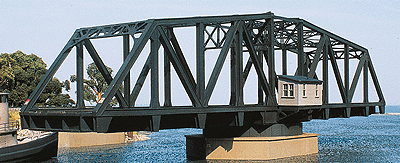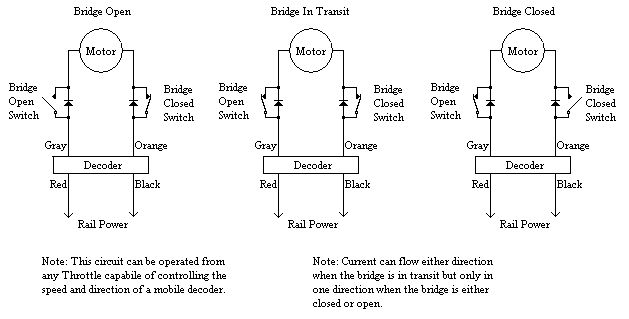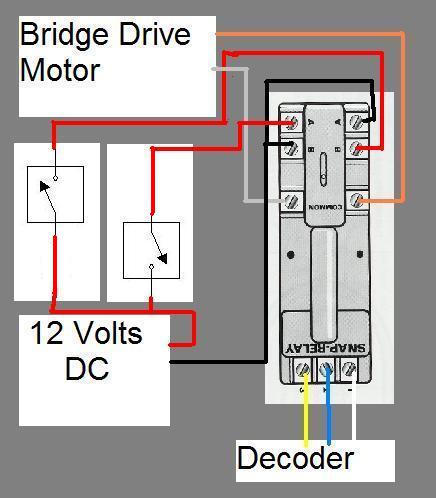What do I need for DCC control of a Walters Cornerstone Swing bridge?

Image Courtesy Wm. K. Walthers
We do not have any direct experience with this particular bridge but after a little research, this is what we recommend.
The instruction sheet which comes with the 933-1050 Motorizing Kit is quite vague. "The unit runs on DC power. Hook the wires up to the DC contacts on a transformer with a maximum voltage of 12. If you hook it up to a variable speed transformer, do not exceed 12 volts. The gear ratio is 320:1." That said, it is still a DC motor at heart with a high reduction rate gear train so that the bridge will turn slowly when the motor is operated. When the motor turns in one direction, the bridge opens; when it is operated in the opposite direction, the bridge closes.
The motor unit could be controlled in a variety of ways, but it would be helpful to determine how much current the unit draws when operating at 12 volts. For example, assuming that this unit draws less than 1 Amp, which seems likely, any 1 Amp Digitrax mobile decoder could be used, such as DZ123. A 1 Amp redundant mobile decoder could also be used, such as one removed from a locomotive as an upgrade act which replaced a Factory-stock decoder with an advanced function one.
It seems unlikely that you could use a DS64 in "stall motor mode" (usually used for Circuitron Tortoise switch machines) to control it since we are not sure how well this Motorizing Kit motor will stand up to having current passing through it continuously.
If you are looking for fully automated operation, you will need to put micro switches in place that stop the bridge when it has completed its movement.
We can thank Al Silverstein for the following diagram, which seems to make everything work perfectly well. To quote Al:
I have a very simple circuit that should handle the movement of the bridge. The circuit consists of a 12vdc power source, two normally closed contacts, two diodes (a 1N4001 should work OK if the current is drawn is under 1 amp when the current is flowing, and a Digitrax mobile decoder.

For what it's worth, here's what I came up with, using a Snap Relay attached to a stationary decoder such as DS64 in solenoid mode.:

Please let us know how this turns out.